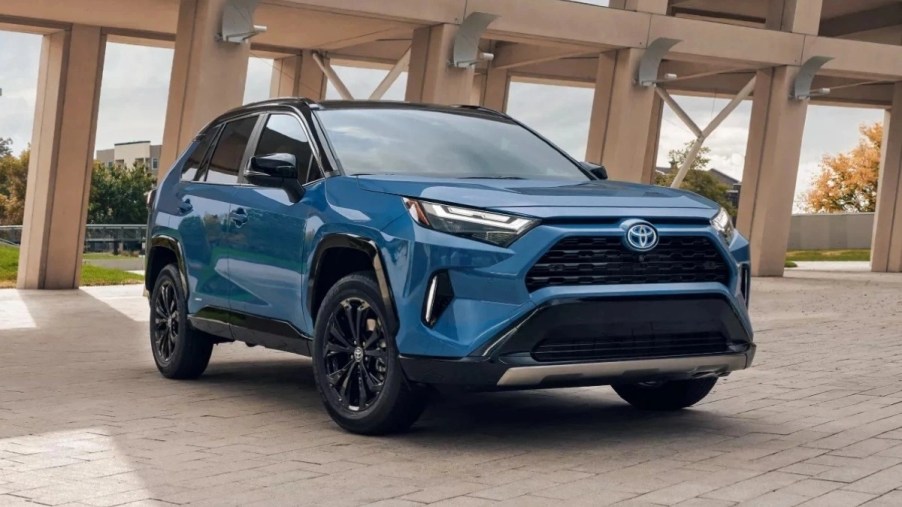
3 Most Common Toyota RAV4 Check Engine Light Causes — Based on Owner Complaints
The Toyota RAV4 compact crossover SUV is an enormously successful model, with its pleasing driving dynamics, practicality, high fuel economy, and a stylish, rugged design. However, like any model, the RAV4 can run into issues, resulting in a check engine light. View the three most common Toyota RAV4 check engine causes. We also see if the compact SUV is reliable.
What are the most common reasons for a Toyota RAV4 check engine light?

The check engine light in the Toyota RAV4 acts as a warning indicator. In the compact SUV, there are systems and sensors that monitor various things, and when a problem is detected, they cause the check engine light to illuminate. RepairPal received responses from owners, identifying the most frequent reasons.
Here are the three most common check engine light causes for the Toyota RAV4:
- Faulty sensor
- Emissions system issue
- Malfunctioning catalytic converter
These issues don’t necessarily mean that the RAV4 is not reliable. We’ll cover the overall reliability later. However, these are the most frequent reasons for a check engine light, so let’s go over them in greater detail.
Most common cause of a Toyota RAV4 check engine light is a faulty sensor

A faulty sensor is the most common Toyota RAV4 check engine light cause — according to RepairPal. And the most problematic one is the oxygen sensor. Also, the defective oxygen sensor can have corresponding symptoms, such as rough idling, the engine misfiring or hesitating, and a decrease in gas mileage. At the most extreme, the compact SUV stalls. The broken sensor can also result in a failed emissions test.
Emissions system issue
An issue with the emissions system is the second most common reason for a check engine light in the Toyota RAV4. Symptoms of a problematic emissions system include slower acceleration, shifting complications, engine failure, and jerking.
Malfunctioning catalytic converter
The other frequent cause of a Toyota RAV4 check engine light is a malfunctioning catalytic converter. There are various types of catalytic converter issues, including clogging, overheating, and contamination. A damaged catalytic converter can result in sluggish performance and engine failure. It also creates more air pollution, for it’s unable to serve its primary purpose: convert polluting emissions into harmless gases.
Additionally, there’s been a spate of catalytic converter thefts around the country, with thieves going after the precious metals. These precious metals are what enable the conversion of the pollutants.
What repairs are needed for these RAV4 check engine light issues?
For these RAV4 check engine light causes, different types of diagnoses of the compact SUV are necessary. This includes a general diagnosis, a check engine diagnosis, and an electric system diagnosis.
A technician at a Toyota service center can conduct these tests — and find the corresponding error codes that reveal the specific reasons. From there, either the repair or replacement might be needed for the sensor, emissions system, or catalytic converter.
Is the Toyota RAV4 a reliable compact SUV — and is it expensive to repair?
Despite these issues, the Toyota RAV4 is reliable compared to most other compact SUVs. RepairPal gives it an “above average” reliability rating of four out of five. In a field of 26 compact SUVs that the automotive site evaluated, the RAV4 ranks 3rd for reliability.
Also, the repair costs are relatively low. The average annual cost to repair the RAV4 is $429. In comparison, the average for the compact SUV segment is $521 — and for all vehicle types, it’s $652.



